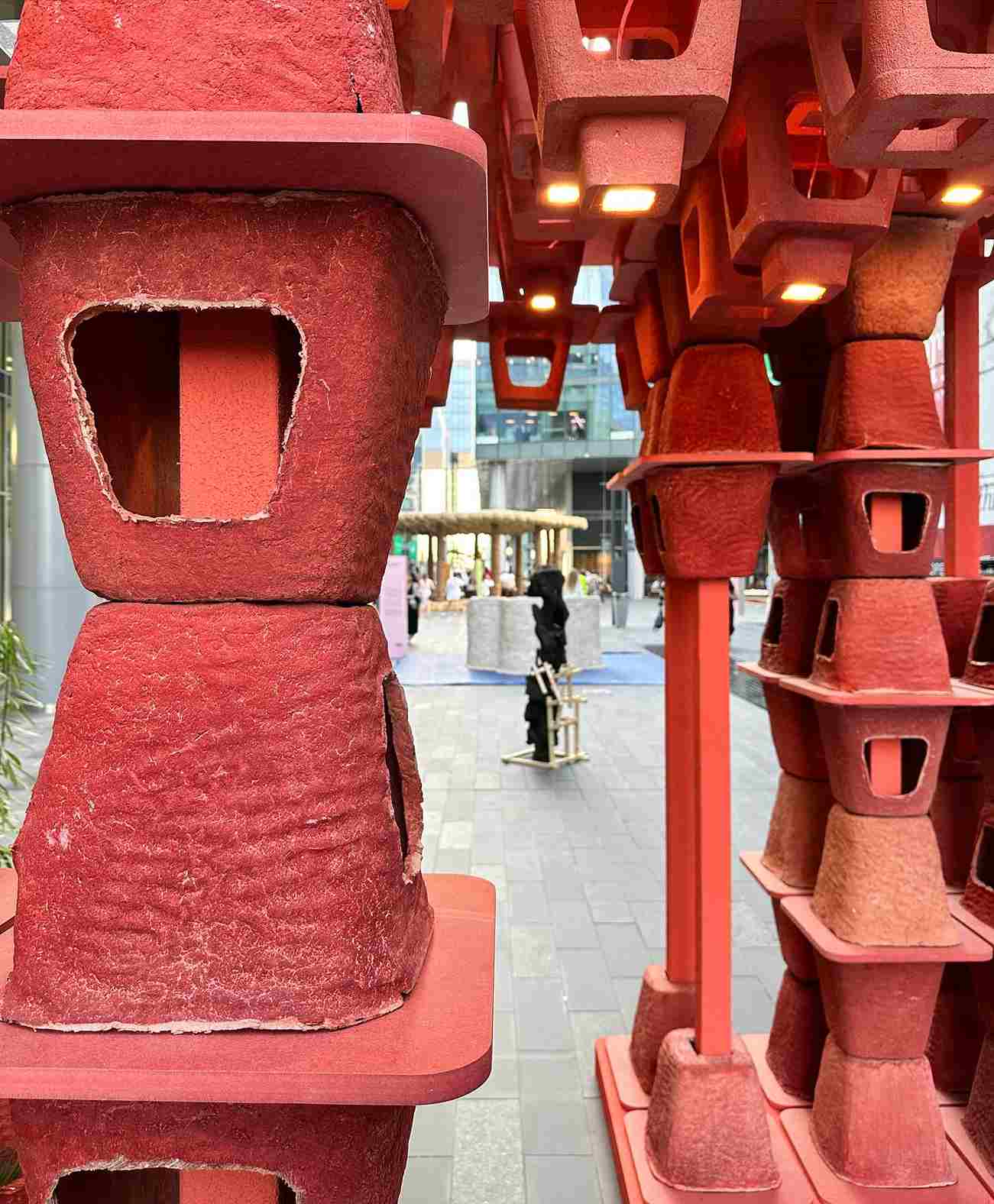
Each year, Dubai Design Week features a diverse array of immersive installations that captivate and inspire visitors, showcasing the imaginative power and innovation in design. The festival, held in Dubai Design District (d3), transformed public spaces with curated outdoor installations and interventions, totaling over 32 installations in the 2023 edition. This year’s focus was on the convergence of design, science and technology to reclaim materials from the past and envision new forms that promote sustainable practices. Notable installations included Pulp Fractions by TEE VEE EFF, which ingeniously repurposed discarded paper and cardboard into stackable, adaptable structures. Know more about it on SURFACES REPORTER (SR).

The stacked modules not only create a new sculptural form but also convey a symbolic message about waste reduction.
The Pulp Fractions by TEE VEE EFF installation addressed the issue of packaging waste, emphasizing sustainability and innovation in both its form and function. TEE VEE EFF’s approach involved processing waste cardboard and paper into a durable, lightweight material, creating stackable modules with grooves and protrusions. The result was a vibrant, sculptural pavilion that not only delivered a powerful message about waste reduction but also provided a functional and visually striking space for the public.

TEE VEE EFF’s approach involved processing waste cardboard and paper into a durable, lightweight material, creating stackable modules with grooves and protrusions.
Utilizing mainly discarded delivery boxes and paper bags, the studio processed these materials through pressing and drying, transforming them into a lightweight and durable substance. The resultant bright-red modules, featuring grooves, protrusions and extrusions, were shaped using a custom mould and stacked to form a whimsical open pavilion. According to Tee Vee Eff, the stacked modules not only create a new sculptural form but also convey a symbolic message about waste reduction. Beyond its artistic appeal, the installation is functional, providing a welcoming space for respite in the public realm. Nevertheless, the installation served as a testament to the creative potential of design in addressing environmental challenges and engaging with the public realm.
Image credit: Dubai Design Week